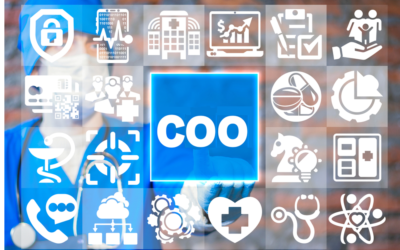In this post we outline how new speech recognition technology is driving accuracy – and informed decisions – across radiology, addressing the challenges caused by widespread staff shortages and the COVID-19 pandemic.Across the NHS and healthcare generally, the past few years have been extremely challenging. Pre-pandemic, the burden on healthcare professionals was already significant. Now, practitioners are under more pressure than ever before.
As a key part of the diagnostic process, the pressure is perhaps nowhere more acute than in radiology. During the first months of the COVID-19 pandemic, 63.2% of radiographers reported an increase in their workplace-related stress levels. This was the result of uncertainty in their working environment and major changes to routine departmental protocols. These protocols continued to change in the 24 months that followed. The combination of demand, low capacity and redeployment across diagnostic screening services saw a strained discipline reach breaking point.
With all this pressure, accuracy is at risk. That said, the challenges radiographers and radiologists face didn’t start in March 2020.
Rising strain across radiology in the UK
Staff shortages in radiology are nothing new. The Clinical Radiology UK Workforce Census Report 2018 highlighted a severe lack of radiology consultants. Three quarters of radiology clinical directors, then, didn’t feel they had enough radiology consultants to deliver safe patient care.
Unsurprisingly, the CQC’s 2018 Radiology Review measured slow reporting times across the NHS. One NHS Foundation Trust held a backlog of 33,400 unreported images, despite attempts to recruit more radiologists and use outsourced support at great expense.
In the years since, the COVID-19 pandemic has only intensified these challenges. With remote working tested by necessity, Trusts increasingly moved to remote/home and hybrid ways of working. However, this added an additional set of issues and risk for both radiologists and radiology reporting, owing to a significant increase in IT burden and technological challenges, as identified in the Clinical Radiology UK Workforce Census Report 2020 published in April 2021.
Even where the most forward-thinking Trusts had already embraced voice recognition technology, few were equipped for making these solutions available from, and to, where they were needed. As a result, most radiologists reverted back to typing their reports, or sending audio files for manual transcription by hospital administration staff or an outsourced transcription service.
In this climate of time pressure and increased image load – now worsened by the pandemic and its associated backlog – radiologists needed and still need comprehensive technological support to work effectively, productively and accurately.
Beyond equipment and capacity
Efforts to improve radiology across the NHS are emerging. The UK Treasury’s 2020 Spending Review earmarked £325 million for investment in new diagnostic imaging equipment. However, the sector remains critically understaffed – by 33% in 2020 and forecast to increase to 44% by 2025.
Technology alone can’t rapidly reduce the workforce shortfall. But replacing outdated hardware, devices and software as well as improving remote connectivity to clinical systems will help reduce errors, drive accuracy, increase efficiency and improve patient outcomes. Technology beyond imaging equipment and connectivity also has an important role to play in helping radiologists feed accurate information into the diagnostics process. Cloud is the key.
Cloud-based speech recognition solutions can transform radiology reporting. They provide ease of access, reduce delays and the risk of errors, and give radiologists and radiographers a consistent reporting experience, even when they’re working remotely.
Empowering radiologists to work accurately
To maximise their impact on reporting quality, speech recognition (SR) solutions need to go beyond accuracy. They need to make this accuracy available everywhere, seamlessly integrated with existing technology.
Radiology Information Systems (RIS) and Picture Archiving and Communication Systems (PACS) are undergoing an evolution. Innovations like SR are helping radiologists interpret and report on images faster. And, crucially, they’re designed to preserve accuracy in a way that simply wasn’t possible a decade ago. Meanwhile, NHS Trusts are moving toward a vendor neutral archive (VNA) – a way to store medical images in a standard format and make them accessible to professionals across a range of systems.
Augnito’s AI-driven SR and voice transcription technology is already being integrated into platforms from Hexarad (a teleradiology service provider) and products from Wellbeing Software, including Cris, the UK’s most widely used RIS.
Augnito brings flexibility and accessibility to radiology: as a SaaS and cloud-based solution that’s easy to implement and use, with no need for additional hardware or on-premise software.
Augnito is building the foundations for the future of radiology. Through voice, clinicians can unlock entirely new ways of working – and capture the accurate detail that practitioners and patients depend on.
Bringing confidence back to radiology
With reports instantly transcribed and fed into clinical systems, SR can significantly ease the IT and technological challenges that radiology has experienced in the last two years and reduce the burden on radiologists. Many existing users report time savings per day. But what radiologists really need is technology they can feel confident about – a way to guarantee that information is not only fast to capture, but accurate to the highest standards.
Innovative AI creates technology that radiologists can count on to deliver the precision they would expect from a committed team, or handwritten report. Augnito preserves the accuracy that every radiologist expects.
Augnito also has the potential to take accuracy even further – not just maintaining standards but taking them to new levels. Fundamentally, by reducing the stress and administrative strain on radiologists, Augnito unlocks more time to apply skills – to interpret and analyse images, before making accurate, informed decisions.
Preserving accuracy is at the core of what Augnito’s AI-powered SR can do, and by better supporting radiologists, we can help reshape the industry for a better, more accurate future.



